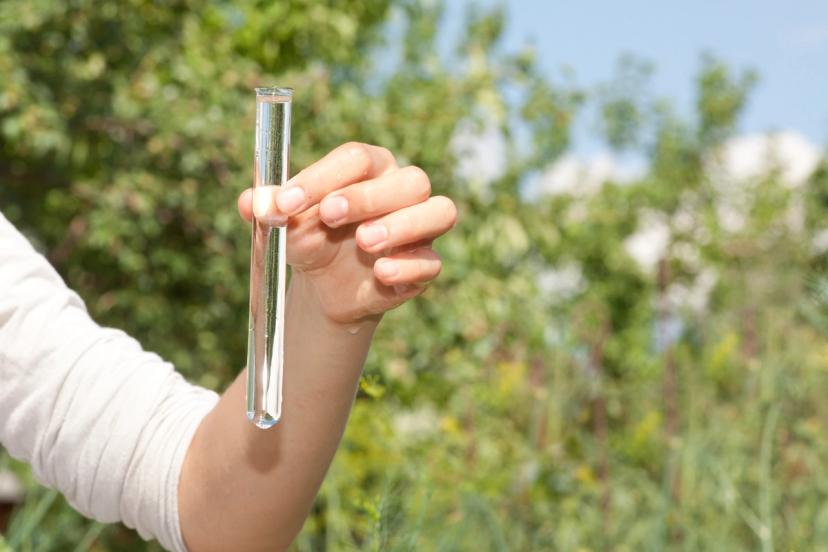How Urbanization of the Water Cycle Is Affecting the Environment
Dr Bryan Brooks discusses the increase of emerging contaminants in water systems and the impact on the environment
29 Sept 2016

Baylor University, Texas, USA
Dr Bryan Brooks is a Professor of Environmental Science and Biomedical Studies at Baylor University in Texas, USA; he also directs the Environmental Health Science program. He spoke to SelectScience® about the effect human populations have on water systems, his environmental quality research and the importance of collaboration for the future of this field.
Q: What is the focus of your research?
Our work focuses on water and the increasingly urbanizing water cycle. This is important because we know more people are living in cities than ever before and if we look forward over the next few decades the majority of the world’s population is located in these urban areas.
There is a concentration of people in really small spaces, which is transforming the planet, and the resources that they utilize, such as food, energy, water and other substances must be taken into consideration. The use of other substances, including industrial chemicals, consumer products and medicines, is increasing faster than waste management or other public health intervention strategies can be developed.
Q: How can this have an effect on the environment?
Used water goes to a waste water treatment plant, that water is then treated and returned back to the environment, maybe to a stream, a river, a lake or an estuary. However, those return flows of reclaimed waters can have really important implications from a water supply perspective, a habitat perspective for wildlife, and even just a hydrology perspective or how waters are moving through freshwater ecosystems.
As a city grows from a historical center near a major waterway, it grows into the headwaters and these reclaimed wastewaters are then returned back into the environment. This results in a large amount of effluent being released into the environment, which can result in effluent dominated and dependent systems. These rivers and streams can be worst case scenarios in terms of wildlife exposure to various types of chemicals, including emerging contaminants, which are an increasing concern.
Q: What techniques does your laboratory use in this research?
We really embrace applied problem solving in our work, so the types of techniques that we use in our lab range from different types of analytical instrumentation such as LC-triple quad mass spectrometry, for analyzing a wide range of substances to using total organic carbon analyzers, microplate readers, qPCR or various types of field monitoring instrumentation.
We have to be able to think about the intersections between chemistry and biology to really understand the attributes of chemicals that makes them particularly useful and not harmful to public health or the environment.
We really embrace applied problem solving in our work, so the types of techniques that we use in our lab range from analytical instrumentation to field monitoring instrumentation.
Q: What factors determine how contaminants are released into the environment?
How much of a substance is actually being used is very important. Some countries have a better sense for these patterns of usage than others. For example, you can pay for access to some databases to determine usage of a substance within a region.
The second aspect is what type of pollution abatement system or wastewater treatment technologies are available in the location. Ultimately, it is important what concentration ends up in the environment, especially in surface waterways – such as the dilution a river may receive. If a city is discharging in the mouth of the Rhine or the Mississippi river for example, the dilution is quite large. Historically we have considered environmental protection as the ‘solution to pollution is dilution’, when you can discharge contaminants into an environment where they are diluted by such a large volume of water, that the exposure of any individual substance to an aquatic organism may be relatively low.
Q: How can the levels of contaminants be monitored?
It is important to have access to high quality analytical instrumentation, which is a barrier in many parts of the world. For example, access to an LC-triple quad mass spectrometer is important and even if you have access, equipment has to be maintained and staff have to be trained.
I think this is an opportunity for universities, government agencies and multi-national organizations to work collaboratively with colleagues, to increase our understanding of what exposures and risks are occurring in less developed areas, especially areas with large numbers of people and concentrations of substances.
The concentration of contaminants is going to be influenced by the usage and the type of system, for example, exposure concentration is affected by the water treatment available. Higher levels of substances can be identified in the less developed parts of the world, which also have the least amount of available information.
Q: Tell us about the Global Horizon Screening Project
We have partnered with the Society of Environmental Toxicology and Chemistry (SETAC), which is asking scientists and engineers from around the world what they think our major research needs are, and putting it into the context of more tractable types of projects.
The idea is that all these major scientific research needs and research priorities are identified through workshops in different locations around the world. In November 2016 representatives from each of those geographic workshops will be presenting some of those key needs to really advance sustainable environmental quality.
Q: What is the future for this field of research?
The types of studies our lab engages aim to move us toward more sustainable environmental quality. The challenges are complex, the wisdom and the knowledge necessary to engage and contribute often requires an interdisciplinary team of like-minded individuals with complimentary expertise.
Working across disciplines and continents represents a tremendously important necessity to be able to move towards these goals of advancing more sustainable environment quality.
